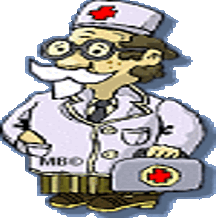Keep Focused; Keep Healthy; Keep Active!
In 2015, the World Report on Ageing and Health by World Health Organisation (WHO) defined healthy ageing as “the process of developing and maintaining functional ability”. The impacts of ageing on the body are well known (including changes in muscular and aerobic capacity) but can be attenuated with adequate exercise/physical activity. Among modifiable factors associated with beneficial effects across the life span, “insufficient physical activity and sedentary lifestyles are among the most significant public health problems which should be corrected by people becoming and being more active throughout life.”
The benefits of physical activity and exercise in the prevention and treatment of many chronic diseases has been identified through research and by robust scientific evidence including sarcopenia, diabetes, cardiovascular disease, hypertension, cancer, osteoporosis, osteoarthritis, depression, dementia, Parkinson’s disease, among many others. The positive impacts of physical activity on ageing and chronic diseases are also linked to the positive impacts physical activity creates in body composition.
‘”Through proper exercise prescription focused on individual needs and medical conditions, we can keep as fit, active and healthy as possible throughout the ageing process.”
Being sedentary for a large proportion of the day has been identified as a major health risk. It is now also understood that it is not just total sitting time in a day that is the problem, but uninterrupted time. Critical times would be those first 3 hrs in the day, or the last 3 hours at night! From a practical perspective, there are simple ways to put regular breaks into the day to keep your blood pumping and your brain clearer.
This information was reported from ongoing research by Professor David Dunstan and his team and the teams at the Charles Perkins Institute, University of Sydney,

EXERCISE SNACKS –2 simple but effective ideas
1. Mobility snack – ideally done for 3 mins every 30 mins. Do a few moves – sitting and standing up, going up and down on the toes, do a few squats and then do some simple arm swings.
2. On the move snack -Try short bursts of aerobic exercise to get your body more active. Walk on the spot for 30 seconds; Choose the stairs instead of the lift; Walk 10% faster for short bursts of activity
Your exercise snack challenge -find and undertake some simple & small ways to exercise
Many exercise issues have been covered in the past , this is to assist you manage your moves as well as possible. The more you can understand how your body moves the more you will be able to move safely and effectively.
If you are experiencing real problems with some movement, it is important however, that a correct diagnosis is established to ensure the appropriate exercise is prescribed to reduce any possibility of exacerbating the issue. Any relevant advice and information concerning treatment relating to a specific health condition, must be sought and guided by an appropriate health professional
We all know that with COPVID the past couple of years has been more difficult to stay focused and motivated to maintain our lifestyle. Thankfully we are now back together again supporting each other in our efforts. In the summary, in a recent program on the ABC concerning the brain, it reported that one effective way to help maintain good brain function was by undertaking regular exercise in a group setting ………… So we are “doing the right thing”………let’s keep going exercising together!


It is a great joy and privilege to still be able to undertake the work I trained for. I revel in the opportunity to assist people with their endeavours to remain as active and healthy as possible whatever condition or situation they may be encountering. Sally.
The new term will be 8 weeks starting directly after the school holidays.
Looking forward to seeing you all next term.

Comments are closed.